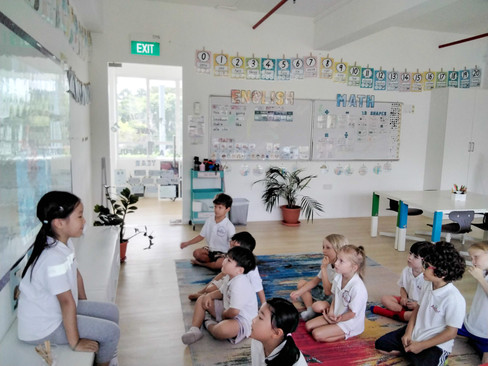Mandarin as a Second Language: Part 1
- Xin Rong

- May 16, 2023
- 2 min read
Why is learning a new language as an adult hard? Our brains have been wired to tune into the sounds of our native language. When you are young, your brain hears all the sounds going around. As humans are social creatures, we focus on the sounds from the people we want to connect to.
How can children pick up languages so quickly then? Young children have an elastic brain, meaning that they can learn things easily. Children also get the message that they are still young, and are learning how the world works. Hence, they are more willing to make mistakes (especially in their production of language). However, that does not mean that all hope is lost for older learners.

Here are some factors that has an impact on how quickly you pick up a new language:
1. Motivation Motivation is a huge component to anything we do. It can be intrinsic (personally wanting), or external (motivated by praise, or a reward).
2. Input Being able to hear the language being spoken is definitely required when learning a new language. Comprehensible input is necessary for language learners and will help them with the production of sounds.
3. Interaction The best way to learn is through interaction with other people, which helps with regulation of meaning. With an authentic audience, corrective feedback can be given immediately in a form of clarifying understanding.
4. Output Language production and comprehension are important and students require the chance to use the target language. However, production can’t function properly without comprehensible and adequate input or interaction.
Here at Astor International School, we offer foreign languages as part of our Enrichment classes. One foreign language option is Mandarin, which Ms. Xin Rong teaches twice a week. In Mandarin classes students are exposed to all the factors.
We have been inquiring into plants this term for Mandarin. We took a look at the plants we have around the school, dug them out gently, to learn about the different parts of the plant. We also planted mandarin seeds from the mandarins we had when we celebrated Chinese New Year. Over the term we learnt about the life cycle of the plant, and what they are called in Mandarin. The students are mainly taught in English, and they learn the key words in Mandarin. This helps reduce the stress on learners, and help them understand that all languages are equal and accepted in the classroom.
We learned how to create a fence for plants that creep, like the tomato plant. We also tried repotting plants to give them more room to grow. We even harvested our mint plant and learnt that harvesting encourages the plant to grow more leaves.
We learned how to ask for things, and to offer things in Mandarin too. We repotted a few aloe vera plants and went around school to ask teachers if they wanted to adopt them. At the end of the day, the students are excited about the lessons, which increase motivation and student engagement.














Comments